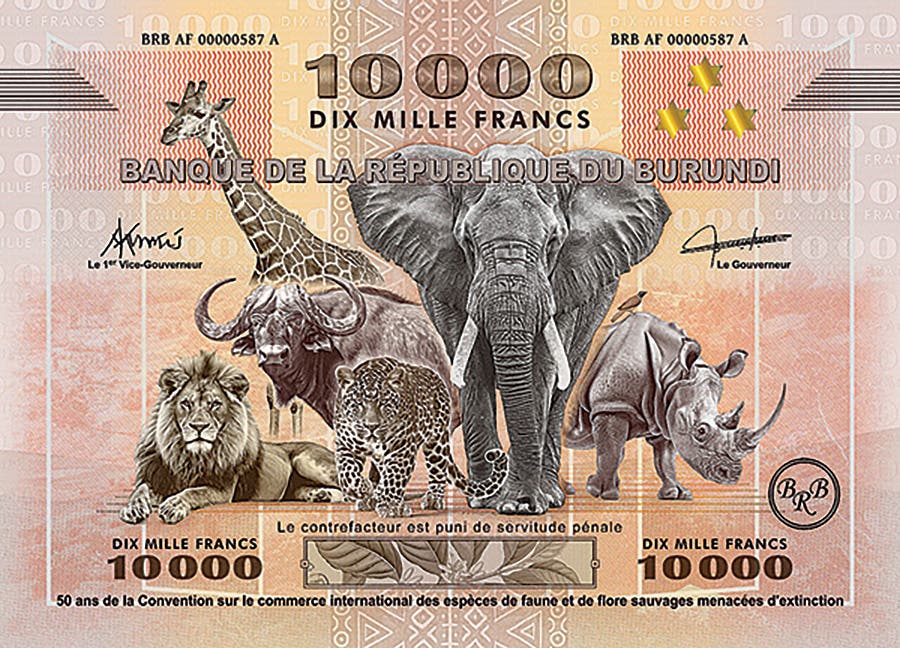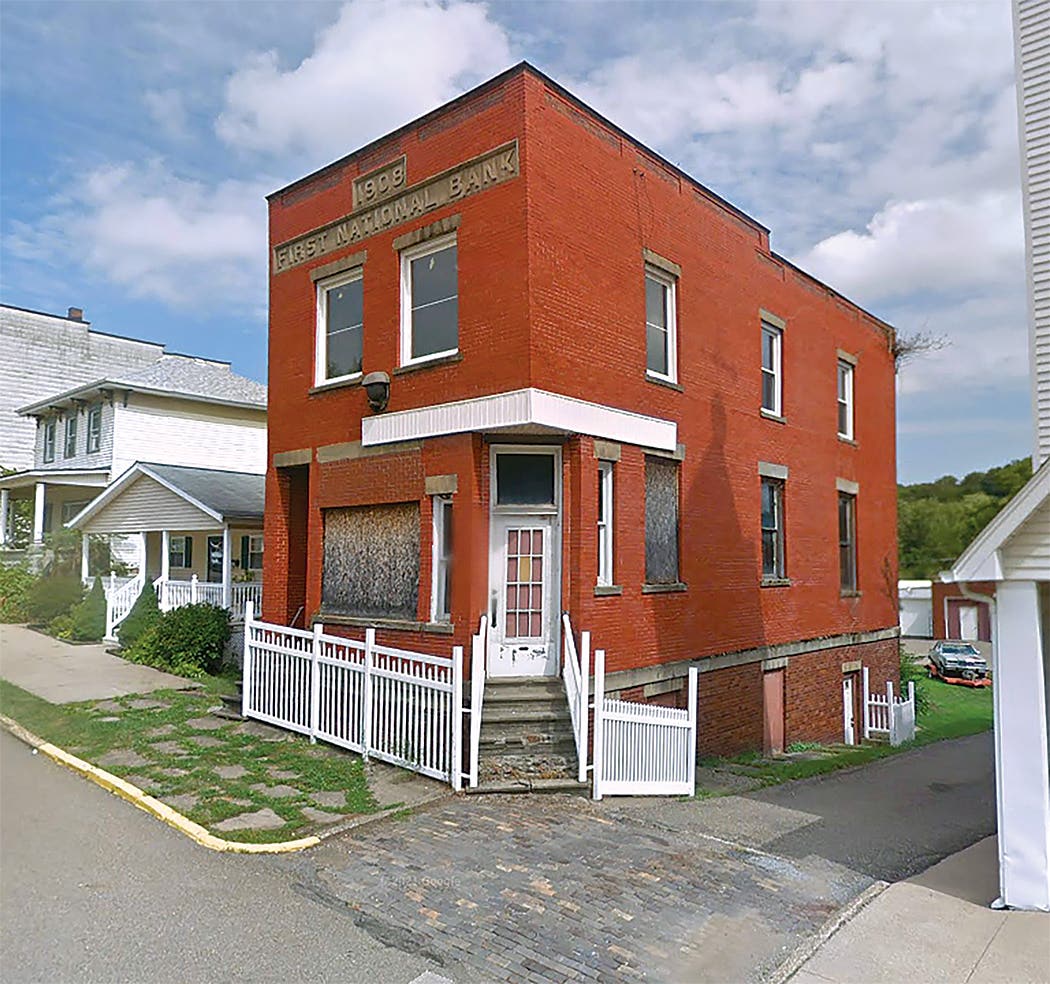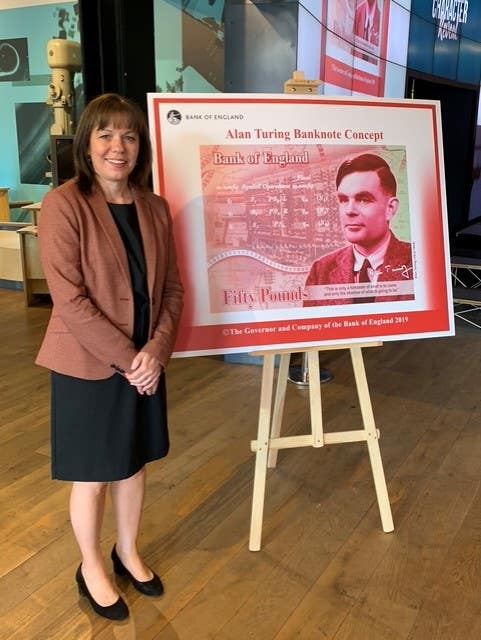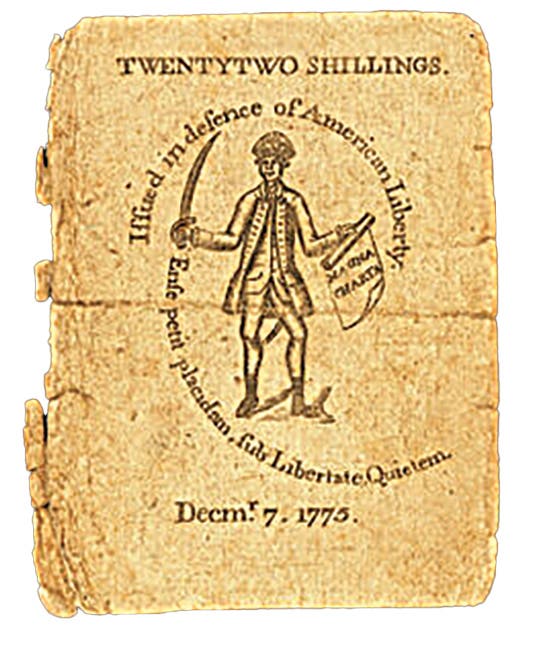First $1 Series of 1935G “In God We Trust” Note
“In God We Trust” was established as the national motto by a Joint Resolution of Congress, which President Dwight D. Eisenhower signed into law on July 30, 1956.
AN ACT To provide that all United States currency shall bear the inscription “In God We Trust” Be it enacted by the Senate and House of Representatives of the United States of America in Congress assembled, That at such time as new dies for the printing of currency are adopted in connection with the current program of the Treasury Department to increase the capacity of presses utilized by the Bureau of Engraving and Printing, the dies shall bear, at such place or places thereon as the Secretary of the Treasury may determine to be appropriate, the inscription “In God We Trust,” and thereafter this inscription shall appear on all United States currency and coins.
Approved July 11, 1955.
Subsequently, “In God We Trust” was established as the national motto by a Joint Resolution of Congress signed into law by President Dwight D. Eisenhower on July 30, 1956.
Background
The impetus for getting the motto on U.S. paper money resulted from a campaign orchestrated by Matthew H. Rothert, a Christian Scientist, coin collector, and founder of the Camden Furniture Company of Camden, Ark. Rothert eventually became president of the American Numismatic Association from 1965 to 1967.
The following is abstracted from the “In God We Trust” website, illustrating key documents from Rothert’s crusade.
Rothert floated the idea while president of the Arkansas Numismatic Society at a quarterly meeting in Mountain Home, Ark., on Nov. 1, 1953. He then wrote Secretary of the Treasury George Humphrey on Nov. 25, 1953, suggesting the idea, followed by a letter to President Eisenhower five days later. Rothert persisted with a publicity campaign and petition drive and worked with the Arkansas congressional delegation until bills supporting the inclusion of the motto were introduced into the Senate by Democrat J. William Fullbright of Arkansas, chairman of the Senate Banking Currency Committee, and into the House of Representatives by Charles T. Bennett of Florida and Oren Harris of Arkansas.
When the bill seemed destined to die in committee, Rothert learned that Senator Almer (Mike) S. Monroney of Oklahoma had been named chairman of the bill's subcommittee. Rothert recalled: “When I contacted my old friend and former furniture dealer Senator Monroney, he assured me he would bring the bill up for passage.”
The following details pertaining to how BEP director Alvin W. Hall and Secretary of the Treasury George Humphrey got language into the act suitable for the Treasury’s practical needs are from BEP (1962, p. 176-178).
When Representative Charles Bennett first introduced his legislation in the House on Jan. 5, 1955, his bill required that the motto should appear on all currency within six months of enactment. In answer to a request for comment from the office of the Secretary of the Treasury, BEP Director Alvin Hall advised that the motto could most easily be incorporated on new dies being prepared for the high-speed 32-subject rotary presses being contemplated.
Secretary Humphrey pointed out that specific legislation was not required for currency design changes because the Secretary was empowered by the then-existing laws to issue paper money in such form as he deemed suitable. Thus, Humphrey, with the approval of President Eisenhower, authorized the addition of the motto on currency printed from the coming 32-subject plates.
Furthermore, the Secretary emphasized that implementing a 6-month deadline for adopting the motto would incur substantial additional costs because the existing inventory of plates would have to be scrapped. The Secretary proposed that the bill be amended to read:
That as such time as new dies for the printing of currency are adopted in connection with the current program of the Treasury Department to increase the capacity of presses utilized by the Bureau of Engraving and Printing, the dies shall bear, at such place or places thereon as the Secretary of the Treasury may determine to be appropriate, the inscription “In God We Trust.”
This language was substituted by Bennett with the additional proviso “and thereafter this inscription shall appear on all United States currency and coins.”
This form of the bill was passed unanimously by the House and Senate, respectively, on June 7 and June 29 and signed into law by Eisenhower on July 11, 1955. Although the motto was already in the works, the legislation unambiguously required its use on all of the nation’s money as soon as it was practical.
Series of 1957 $1s
In 1957, the BEP installed new high-speed rotary intaglio printing presses that allowed the currency to be printed on dry paper using newly developed non-offset inks. One major advantage of the dry method was that paper shrinkage was no longer a factor, so the plate size was increased from 18 to 32 subjects.
The first 32-subject production consisted of $1 Series of 1957 silver certificates that went to press in July 1957, with first deliveries to the Treasury on Sept. 9, 1957, for release to the public on October 1. They included IN GOD WE TRUST as part of the back design in accordance with the Act of July 11, 1955.
Series of 1935 $1s
The other classes and denominations of currency, including the $1 Series of 1935 silver certificates, were printed on flatbed presses using wetted paper. The Act of July 11, 1955, recognized that immediately replacing the existing costly printing plates used on the flatbed presses would be an enormous expense. Thus, the law permitted the BEP to gradually include In God We Trust as production moved to the high-speed rotary presses. The first 32-subject production for the other classes and denominations was launched as Series of 1963 notes.
The output of the rotary presses was insufficient to meet the $1 demand, so the Series of 1935 silver certificates without the motto continued to be printed on 18-subject flatbed presses. The Series of 1935F was current when the Series of 1957 production began, so 1935F and later 1935G notes were produced without the motto from existing back plates.
Of course, the religious right, fanned by the press, claimed the missing motto on the 1935 series notes was the result of an atheistic conspiracy within the government, so they showered the White House, Congress, Treasury, and BEP with more than a thousand complaints, many being lengthy petitions from religious, civic and veterans’ organizations.
To quell the unrest, all the Series of 1935 $1 silver certificates began to be printed with the motto mid-series in the Series of 1935G. The last delivery to the Treasurer of the no-motto variety occurred on March 12, 1962, and the first delivery of the motto version was on April 2, 1962 (Shafer, 1967, p. 112). The changeover was abrupt, beginning with the motto serial D48960001J. That note is featured here.
Technical Details
You will notice from the illustrations that the last 1935G no-motto note delivered to the Treasurer carried serial D48958999J rather than D48960000J. Missing were 1,001 serials. The pair came with a clarifying explanation that the last 1,001 notes in the brick containing D48958999J were no-motto star notes. As unsatisfying as this was, the occurrence has interesting implications.
At the time the 18-subject Series of 1935G no-motto/motto pair was printed, the sheets were serial numbered on rotary overprinting presses in batches of 8,000 sheets. Numbering was from highest to lowest serials within a batch. This way, the last sheet to come off the numbering press landed on the top of the finished pile. Thus, the lowest numbers for each plate position in the batch were on the top sheet.
Numbering was vertically consecutive downward through the pile of sheets in each plate position. Consequently, when the notes were separated, they were perfectly collated and easy to band in 100-note packs.
The serial numbers between the plate positions stepped off from each other by 8,000, which was the number of sheets in the batch. The lowest serial on each sheet was in the upper left corner, and the highest on the lower right.
The presence of 1,001 star notes between the last no-motto and first motto notes in this changeover pair reveals that someone was carefully using up not just 1,001 individual star notes, but rather they had placed 1,001 uncut no-motto star sheets at the bottom of what was otherwise going to be a short pile. Therefore, every plate position had 1,001 star notes at its bottom, for a total of 18,018 star notes in the batch.
In this scenario, the numbering press operator had to set the initial numbers in each plate position at a starting number of 1,001, less than the usual high numbers for that press run, specifically, D48958999J in the R position. Notice that the last no-motto note illustrated carries this number from the R position.
He then numbered the 6,999 sheets, placed them on top of the existing 1,001 sheets of stars, and sent the batch off for separation. This reveals care in avoiding waste because 1,001 sheets of no-motto star notes could be consumed usefully rather than destroyed.
Implied is that the BEP management desired to deliver the new 1935G motto notes free of contamination of leftover no-motto star notes, thus drawing the line on the release of no-motto notes. This statement may not be accurate. I was collecting during this transition but didn’t observe if no-motto star notes continued to be used in the motto packs.
Saving the 1935G Pair
Whoever assembled the changeover pair featured here had to retrieve the last brick of no-motto and the first brick of motto notes, then dig backward through the no-mottos to find D48958999J. Those two bricks were numbered, packaged, and delivered to the Treasurer’s office on different days. Obviously, pulling the pair was accomplished in the Treasurer’s office.
Putting the pair together was a very special favor for someone. I have no documentation about who the recipient was because that information was not transmitted with the notes. I suspect it was Amon Carter, Jr., who was very well connected politically with the Treasury officials then and apparently appears to have acquired at least one series changeover pair and some first notes of similar vintage.
You may also like:








